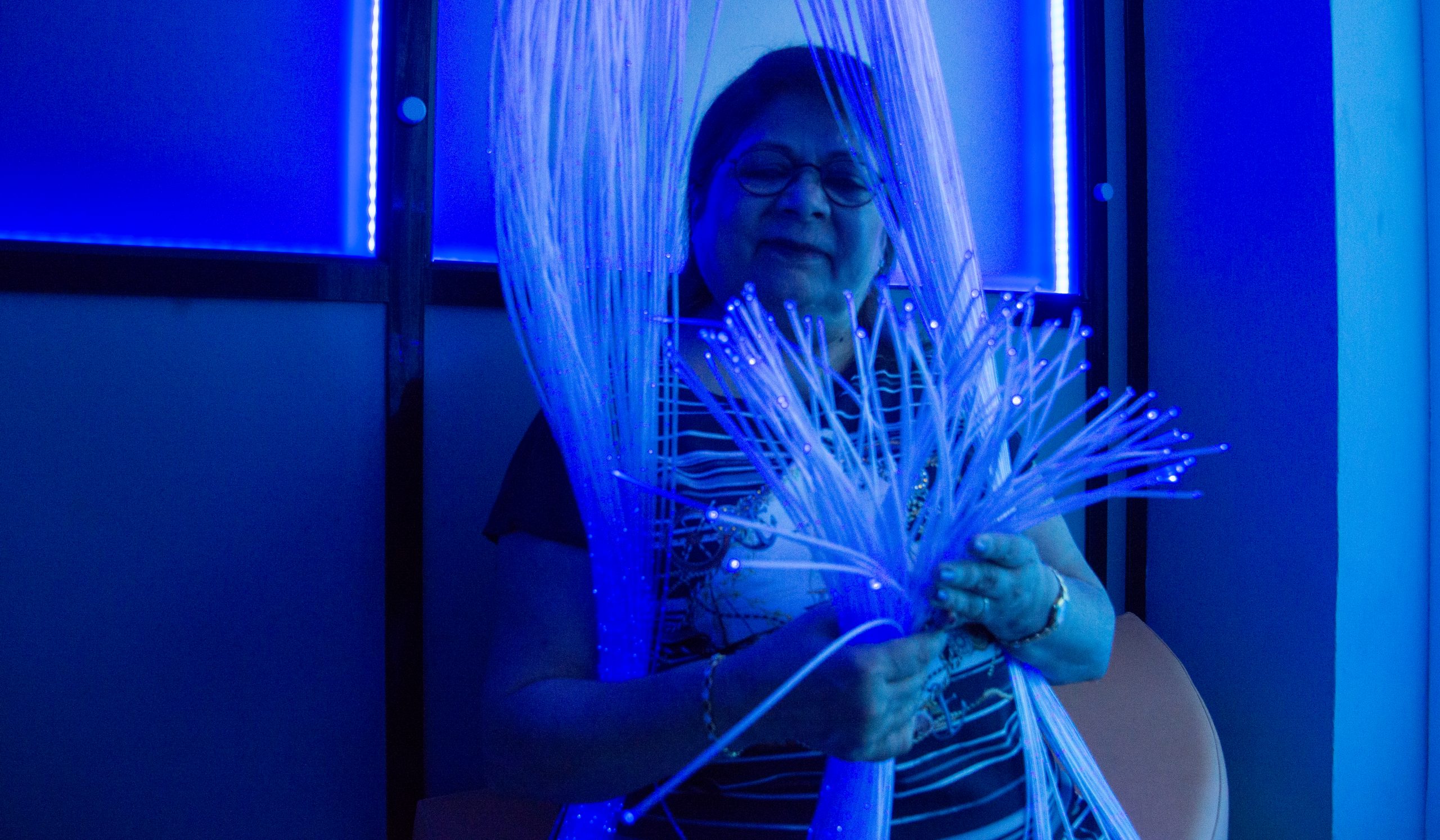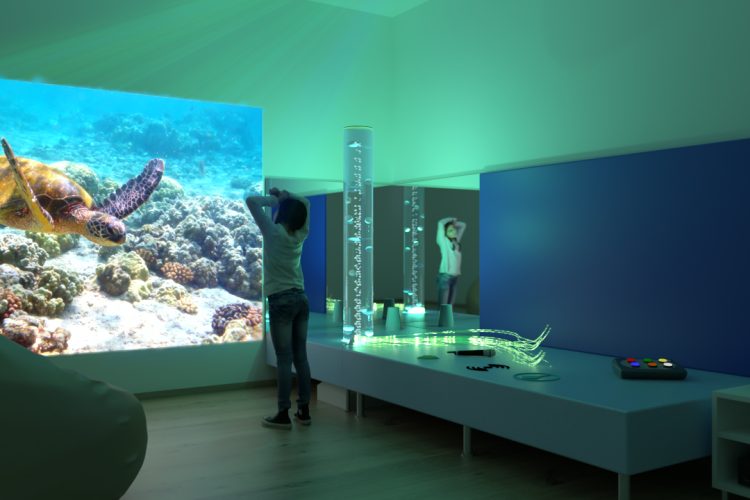With age, often certain abilities deteriorate, especially if those abilities are not put to use. We can observe this happening with the elderly as they demand less of their cognitive skills over time. Dementia is among the many neurodegenerative diseases that exist and has a significant impact on the elderly population. Dementia affects a person’s wellbeing, that of their family and the environment around them. The effects of dementia limits their autonomy from the earliest stages and reduces participation in all kinds of activities. It can also negatively impact an individual’s mood and behavior, amongst other symptoms.
To help prevent these neurodegenerative diseases and aid in improving the quality of life, it is increasingly common to find residences and centers installing multisensory rooms for the care of the elderly. Therapeutic sessions in multisensory environments are especially helpful for addressing difficulties in the sensory, motor, cognitive and social areas.

Participation and well-being
Stimulation through activities adapted for each person and involving different cognitive, sensory-motor and social processes help elderly individuals remain active and participative. This in turn slows one’s deterioration while also encouraging self-determination. Aging is a reality but if we can bring about a more positive state of mind in the individual, this has a benefit on their overall health.
The lack of participation in engaging activities progressively leads to feelings of frustration and insecurity, which further accentuates the alterations in mood (apathy, mood swings, agitation…) and can generate isolation, disconnection, and behavioral alterations. The use of multisensory environments as a therapeutic tool improves emotional states and behavioral conduct.
This complements the use of medication and also decreases the use of physical restraint measures. Studies show that combining pharmacological and non-pharmacological therapies is the best way to delay deterioration and improve the quality of life of the elderly.

In a Seclusion and Restraint Reduction Strategy review from December 2014 by the Mental Health Commission of Ireland, multisensory facilities were cited as an environment where seclusion and restraint was reduced.
More immersive words
Multisensory rooms are an excellent tool but if we add the SHX technology to the experience, the tool is even more powerful. The result is a totally immersive space with audiovisual content that is projected on the wall and can be combined with the rest of the lighting elements, vibroacoustic stimulation and other special effects. A fully interactive world that can be created and customized for each user or a group of participants. Users can take control of the room with different controllers and turn the room into any theme they choose, at the touch of a button. They can travel from an underwater scene to the treetops of a forest, from sitting at the dinner table with their family members to remembering the way back home from their daily walk.
In an SHX multisensory room, the professional in charge of the session can create for the user(s), coherent and personalized content that enters through different sensory pathways. This content can be adapted to each person, their history, their stage of development, their needs and interests, including multiple intervention objectives.

The room can be used to energize and animate the user, or, to create a quiet, safe environment to decompress. For example, the user can experience the adrenaline release from a roller coaster ride, or sit in front of a cozy fireplace, reminding the user of evenings spent reading in a countryside house. Photographs of travels or special moments can also be displayed, serving as a gateway to cognitive stimulation at different levels of complexity.
Within the SHX multi-sensory rooms, we can:
- Return to the essence, in other words, establish certain stimuli in order to relive activities in a regulated way with simple, pleasant and coherent stimuli, while also adapting to the sensory capabilities of each person.
- Apply complex and powerful stimuli such as music, and facilitate connection and communication, which is a great source of well-being.
Items of interest
In A Randomized controlled trial of the effects of multi-sensory stimulation (MSS) for people with dementia in The British Journal of Clinical Psychology (R Baker, S Bell, E Baker, S Gibson, J Holloway, R Pearce, Z Dowling, P Thomas, J Assey, L A Wareing), immediately after a session, “patients talked more spontaneously, related better to others, did more from their own initiative, were less bored/inactive, and were more happy, active or alert” and “showed a significant improvement in mood and behaviour at home…”
Free Project Design
If you want to learn more about the benefits of Multisensory Environments or see how you could adapt it to your space, therapeutic goals, and users, you can send an email to hello@qinera.com.

Written by:
The team at Qinera
Qinera produces assistive technology for people with disabilities with the aim of improving their autonomy and life quality.
Its human team includes: occupational therapists, special education teachers, speech therapists, engineers, IT developers and experts in assistive technology.
Read more posts












